Mechanical Keyboards: A Simple, Easy-to-Read Guide
Mechanical Keyboards: A Simple, Easy-to-Read Guide
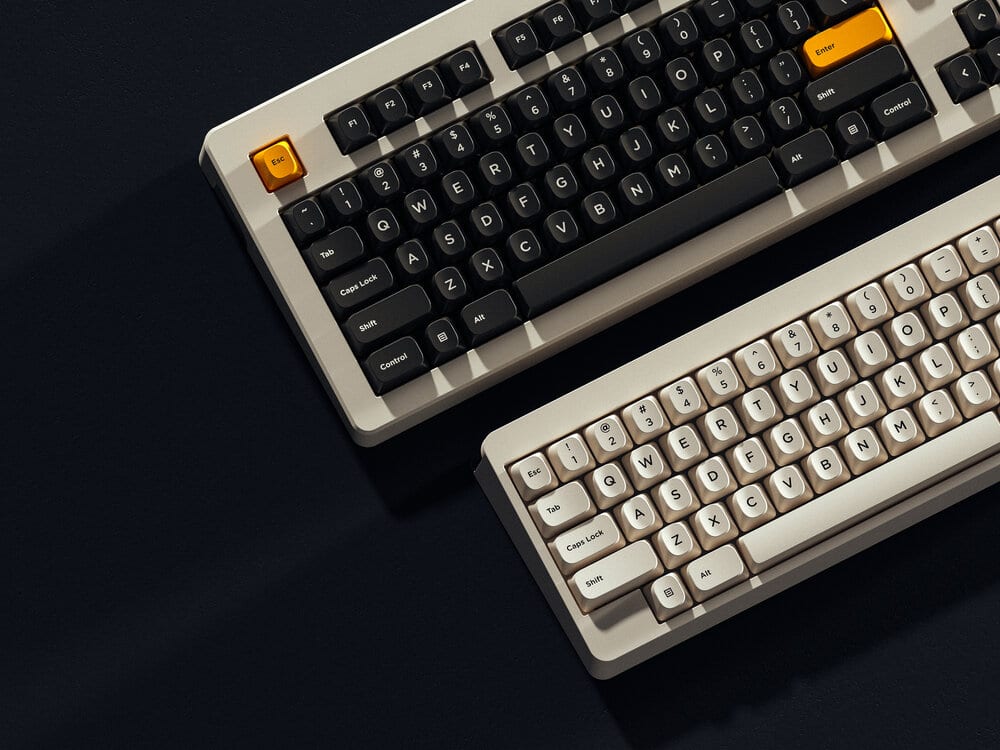
You’re considering buying a mechanical keyboard, but it can be a little confusing when you first begin your research. Compared to the limitations of the common membrane or rubber dome keyboards, mechanical keyboards have dozens of options to consider. This might be slightly overwhelming at first, but having the ability to personalize your keyboard makes going mechanical well worth the extra cost.
This guide will cover everything you will need to know before shopping for a mechanical keyboard, so let’s take a quick look at what we’ll cover:
Quick Overview
What are mechanical keyboards?
Mechanical keyboards use switches that are, well, mechanical, hence the name. Under each keycap is a spring-loaded mechanical switch that records a keystroke when the switch is triggered by pressing down. Mechanical switches have a distinct feel and sound that differ from ordinary keyboards, and tend to be more tactile and responsive. Ordinary keyboards most commonly use a membrane that is placed underneath the entire set of the keyboard’s keycaps, acting as a pressure pad that records keystrokes when the keycap comes into contact with the underlying membrane and circuits. Membrane keyboards provide almost no tactile feedback and are much harder to type with, but are very common due to the fact that they are cheap to mass produce. A slight upgrade to the membrane keyboard mechanism is the dome-switch. Dome-switch keyboards have a rubber-dome under each keycap with a metal switch, resulting in a more tactile feel, but mushy nonetheless.
Compared to membrane or dome-switch keyboards, mechanical keyboards are more durable and last much, much longer. Some mechanical switches are rated for over 100 million actuations, meaning you can press a key on your mechanical keyboard nearly 100 million times before it fails.
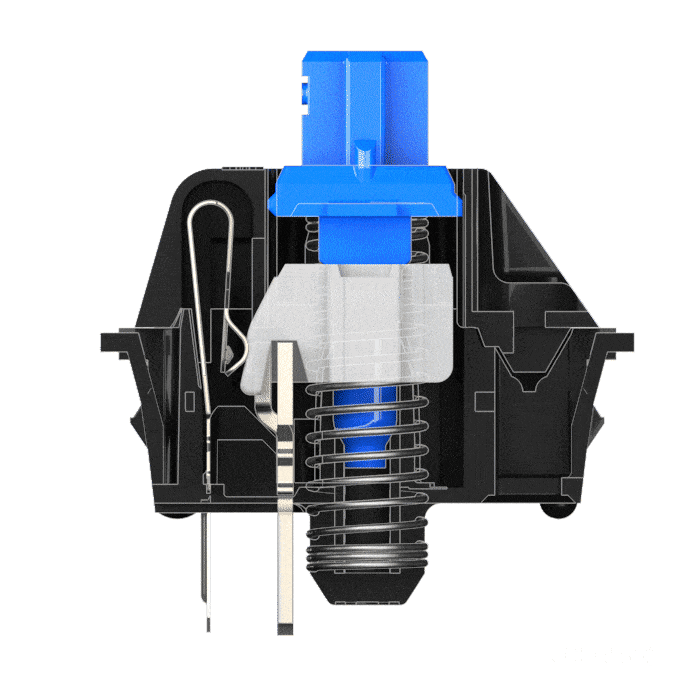
Key Rollover & Anti-Ghosting
Key rollover (KRO) is how many keys can be pressed simultaneously while still registering. Ordinary keyboards often fail with certain key combinations that are pressed simultaneously and will be registered incorrectly, but mechanical keyboards generally allow more keys to be recognized at one time. Most mechanical keyboards have at least a 6KRO, meaning that 6 keys can be pressed simultaneously without any problems registering the keystrokes. Many mechanical keyboards have No Key Rollover (NKRO), allowing every key to be pressed simultaneously without having any problem with keystroke recognition. Mechanical keyboards that have a 6KRO can be advantageous while gaming when each keystroke can mean life or death, winning or losing, glory or humiliation. But you’ll need NKRO if you’re the type to smash your keyboard when you get sent back to spawn.
Ghosting occurs when the underlying matrix circuit becomes “confused” when multiple keys are pressed simultaneously, thus outputting an incorrect “ghost” key that was never pressed. Anti-ghosting ensures that incorrect keys do not register when multiple keys are simultaneously pressed. Don’t get too hung up on this, though, since ghosting is a rare occurrence.
Types of Mechanical Switches
There are three main types of mechanical switches to choose from: linear, tactile, and clicky. Each type of switch provides a distinct characteristic to consider based on your preference.
- Linear switches are the smoothest of the three, and do not have the distinct click sound when reaching the actuation point of the switch. There is no “bump” feel when you press down – it’s just a smooth ride all the way down to the bottom.
- Tactile switches have what feels like a bump before activating the switch when pressing down on the keycap. These switches feel distinctly different than linear switches, as it provides a more tactile feedback to indicate when your keystroke has reached the actuation point.
- Clicky switches are the same as tactile switches, but create more of an audible click when a key is pressed. This type of switch has both tactile and clear audible feedback to indicate when a key has been pressed. If you stay up late at night gaming, then this switch might wake up the family if you weren’t already tilted.
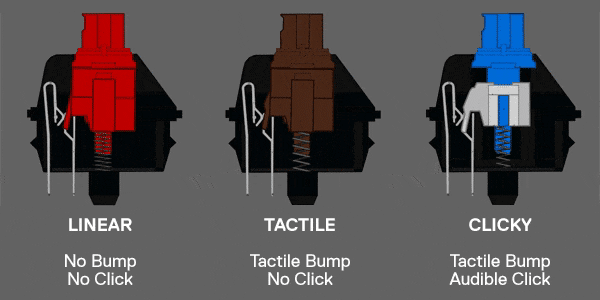

Mechanical Switch Brands
There are various companies that create mechanical switches and keyboards, the oldest and most common being Cherry. Cherry has been manufacturing keyboards since 1973, and their switches are found in many mechanical keyboards produced by other manufacturers. Cherry isn’t the only mechanical switch maker in the market nowadays, though. Other makers of mechanical switches include Gateron, Logitech, Razer, Outemu, and Kailh.
With Cherry being the most common switch provider in mechanical keyboards, it’s important to note the differences in their various switches. Check out the list below to get an idea of the different mechanical switches made by Cherry, which also serves as a model for understanding other brand’s switches:
Cherry MX Red
- Type: Linear
- Actuation Force: 0.45 N
- Actuation Point: 2.0 mm
- Lifespan: 100+ million actuations
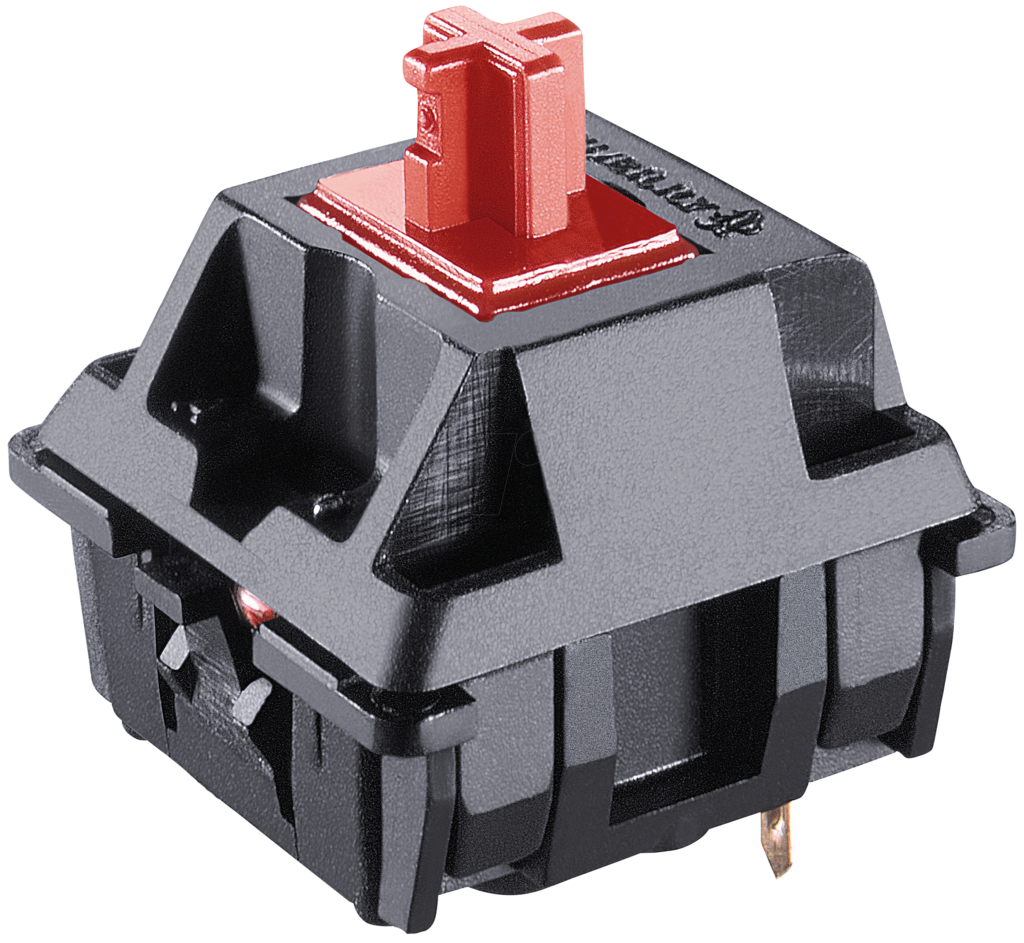
Cherry MX Black
- Type: Linear+Silent
- Actuation Force: 0.60 N
- Actuation Point: 2.0 mm
- Lifespan: 100+ million actuations
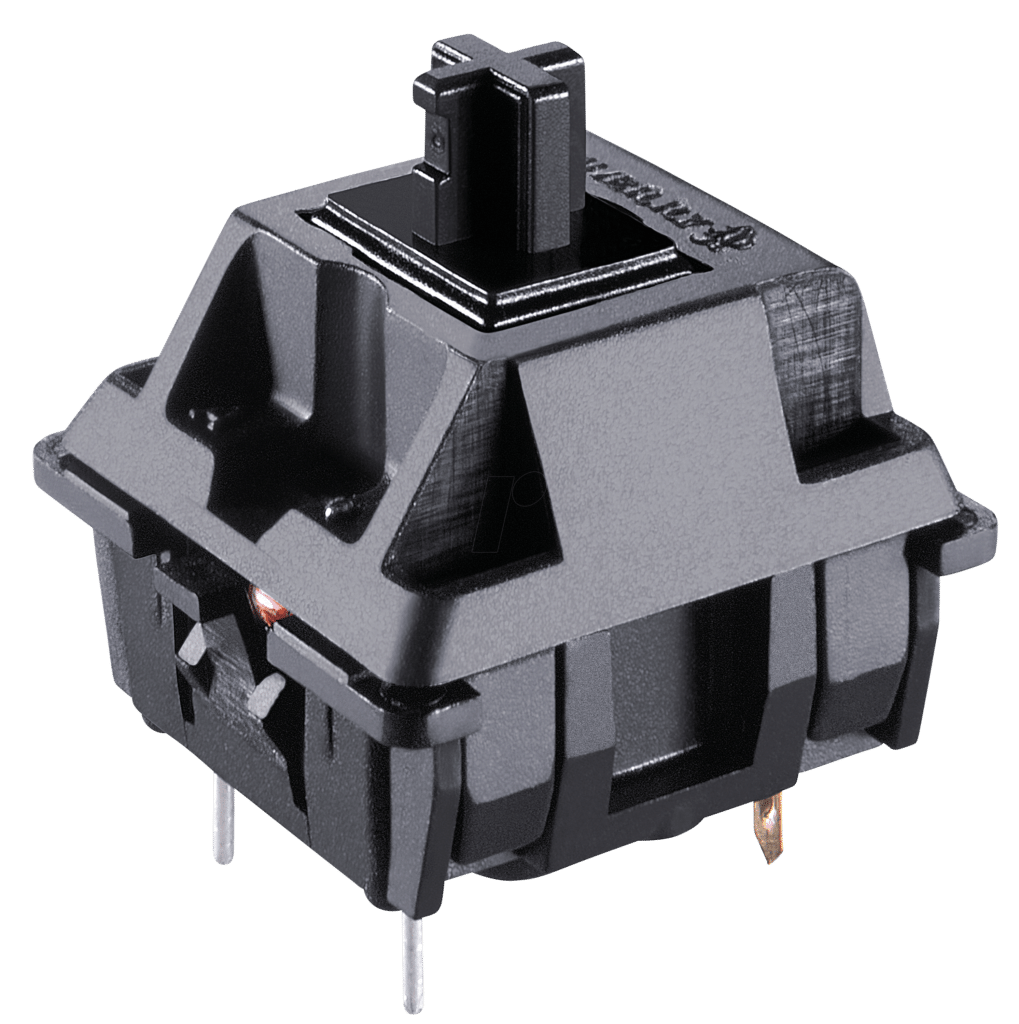
Cherry MX Brown
- Type: Tactile
- Actuation Force: 0.45 N
- Actuation Point: 2.0 mm
- Lifespan: 100+ million actuations
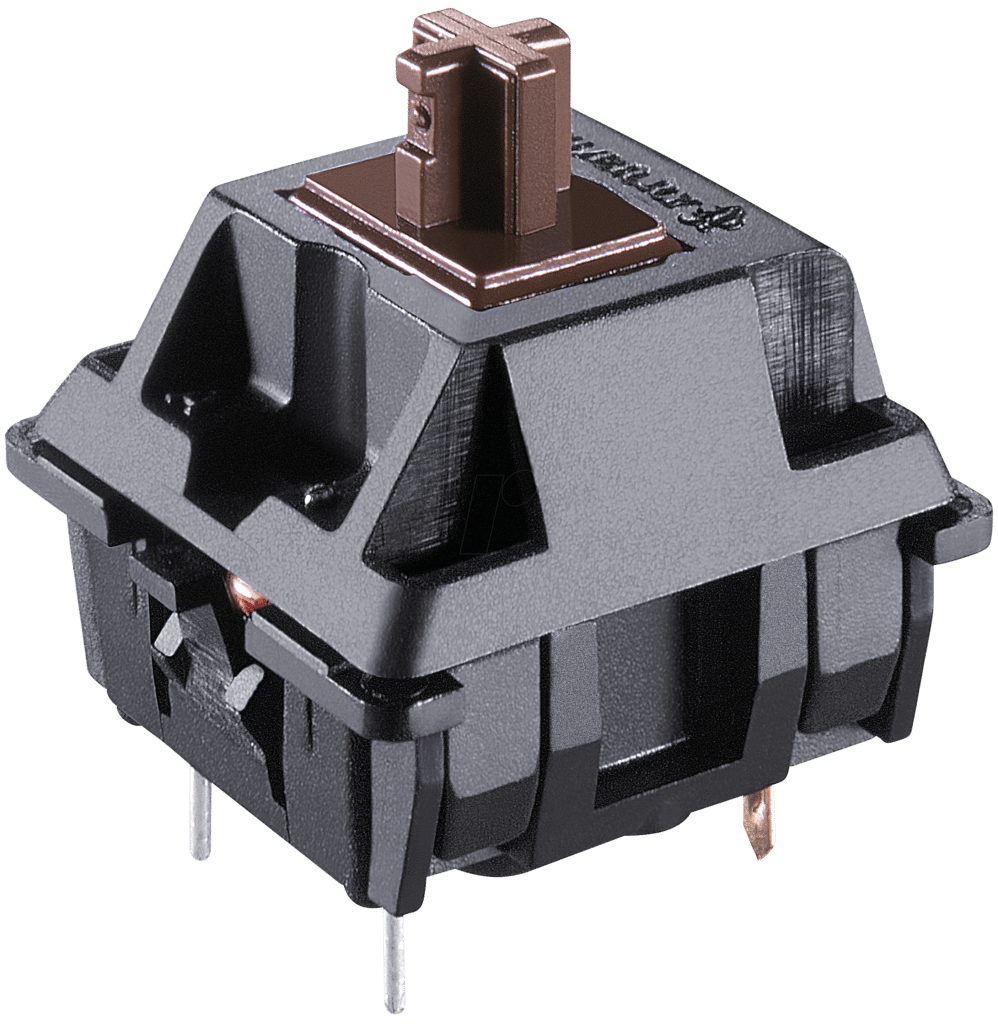
Cherry MX Blue
- Type: Tactile/Clicky
- Actuation Force: 0.50 N
- Actuation Point: 2.2 mm
- Lifespan: 50+ million actuations
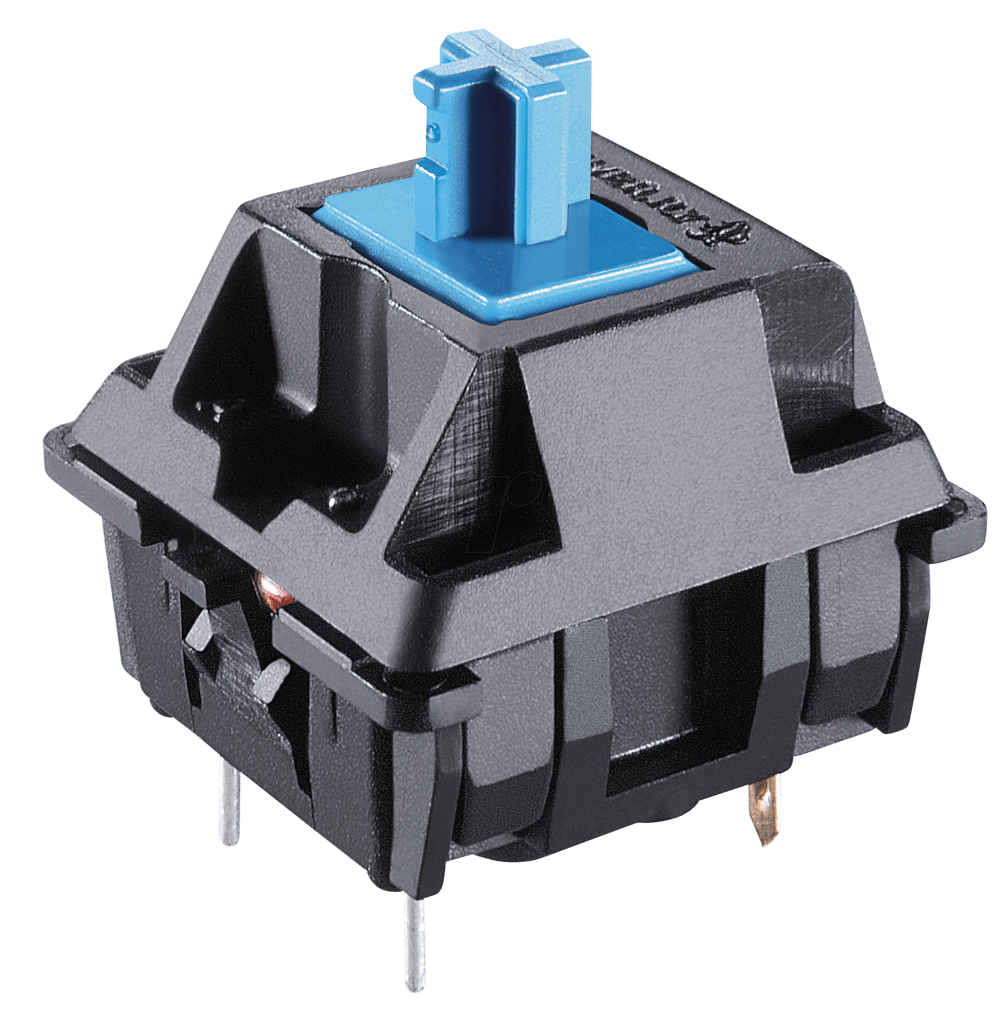
If you’re needing to know more about switch specifications of Cherry or various other brands, check out the most commonly used mechanical switches on pre-built keyboards on Wikipedia.
Keyboard Size
Now that we’ve got switches out of the way, let’s talk about keyboard size. If you’re shopping for a mechanical keyboard you may have noticed that some keyboards are TKL, 75%, 60%, etc. These specifications are referring to the size of the keyboard.
Keyboard size is measured in percentages, with a typical full-size keyboard being 100%, and a 75% size keyboard being 75% of the typical full-size keyboard. The most common options are Full-size (100%), Tenkeyless (TKL), and Compact (60%), as illustrated below:
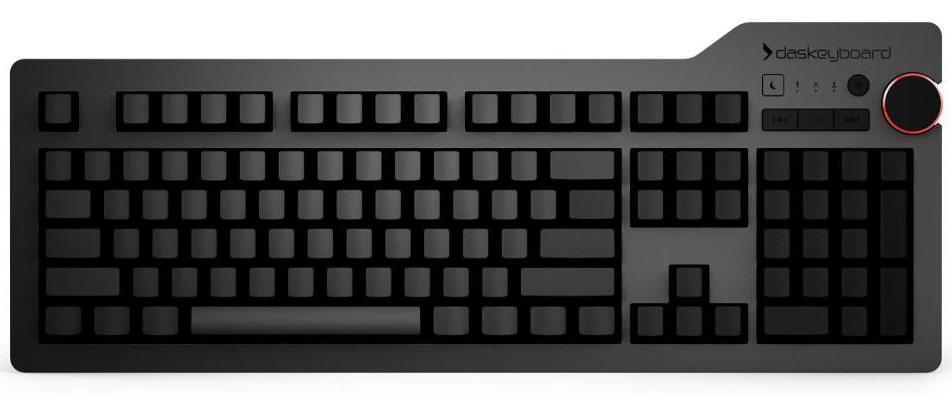
Full Size / 100%
Full size keyboards have the number pad, function row, & oftentimes include media control.
Tenkeyless (TKL)
TKL layouts do not include the number pad
Compact / 60%
Compact layouts do not have the number pad, arrow keys, or function row.
Full-size keyboards have the number pad, arrow keys, function row, and will oftentimes include media control.
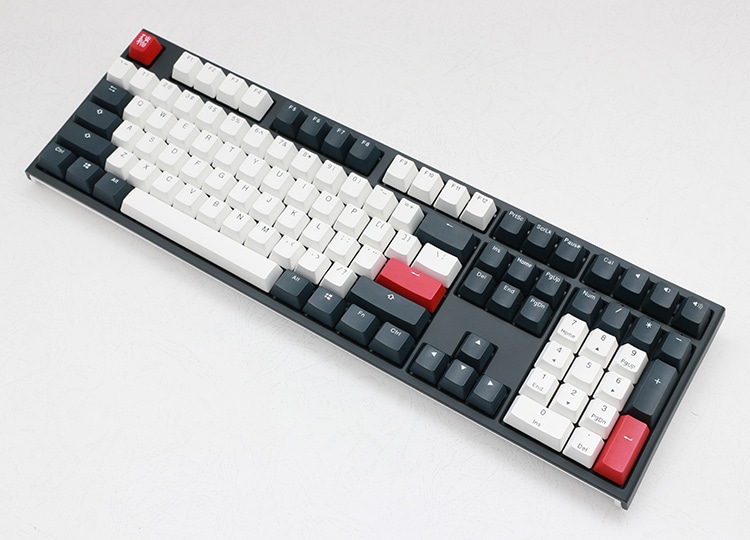
TKL keyboards do not include the numberpad, but some will still include media control.
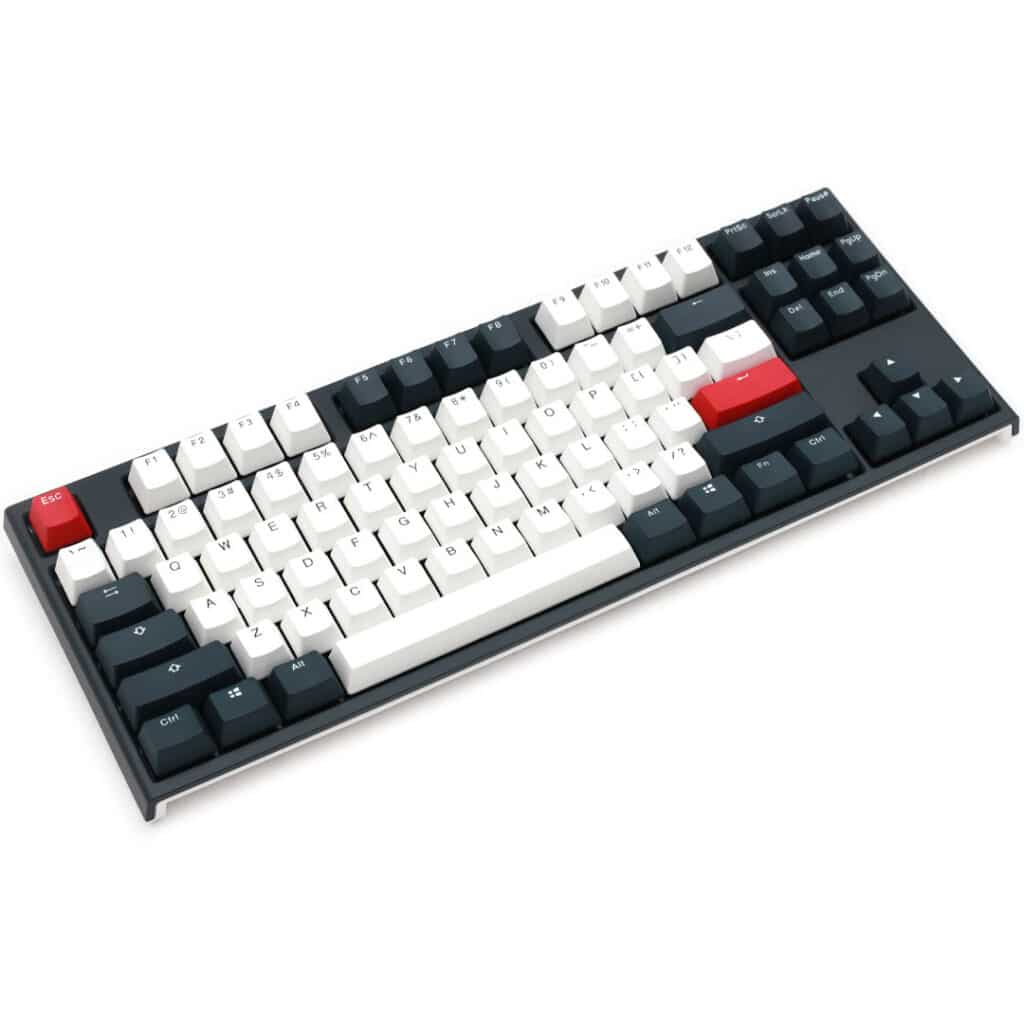
Compact layouts omit the number pad, arrow keys, and function row.
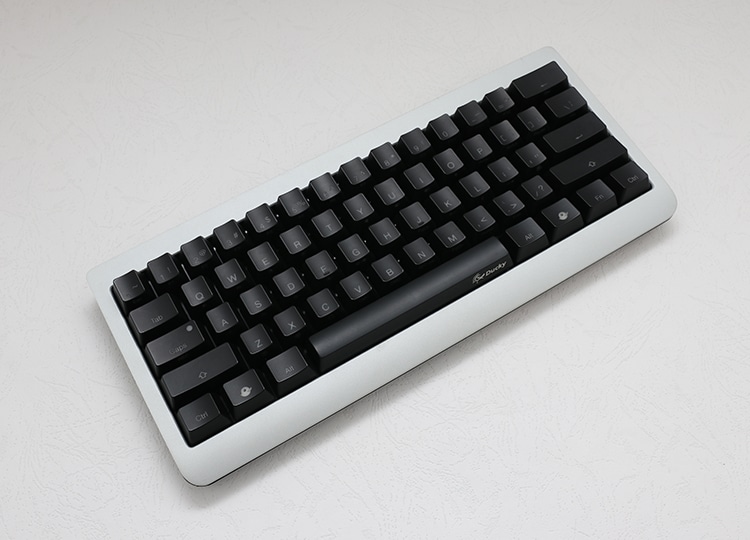
There are less common sizes/layouts as well if the above 3 options don’t cut it, including 75%, 65%, and 40%.
Keycaps
Keycaps are an important part of the keyboard, and the type of keycap will often be specified when shopping for a mechanical keyboard, but not all keycaps are created equally. There are three different types of plastic that are primarily used to form keycaps: Acrylonitrile Butadiene Styrene (ABS), Polyoxymethylene (POM), and Polybutylene Terephthalate (PBT). But don’t worry, you don’t have to be a chemist to understand the differences.
ABS is the most common thermoplastic used to form keycaps due to its reliability during the injection molding process and its cost effectiveness. Keycaps made from ABS are texture-less and smooth, and will wear easily causing keycaps to shine after awhile. It’s the same type of plastic used to create Legos and that plastic clarinet you had as a kid.
POM is a thermoplastic, but less commonly used to form keycaps. Similar to ABS, its texture-less and glossy, however, it’s much more durable than ABS and does not shine overtime as an ABS keycap would.
PBT is a very durable thermoplastic and is used to create high-quality keycaps. As opposed to ABS and POM, PBT has a grainy-like texture that will not wear overtime. This type of plastic is considered the gold standard for keycaps.
Double-shot is an injection molding process used to form keycaps with legends (lettering/symbols) that do not wear. The legends of double-shot keycaps is neither etched, nor printed onto the keycap. Rather, it is a plastic mold insert that has the legend protruding from the mold, with plastic molded around this insert. Thus, double-shot keycaps have a legend that will not fade away whatsoever.
Double-Shot PBT are the highest quality keycaps on the market.
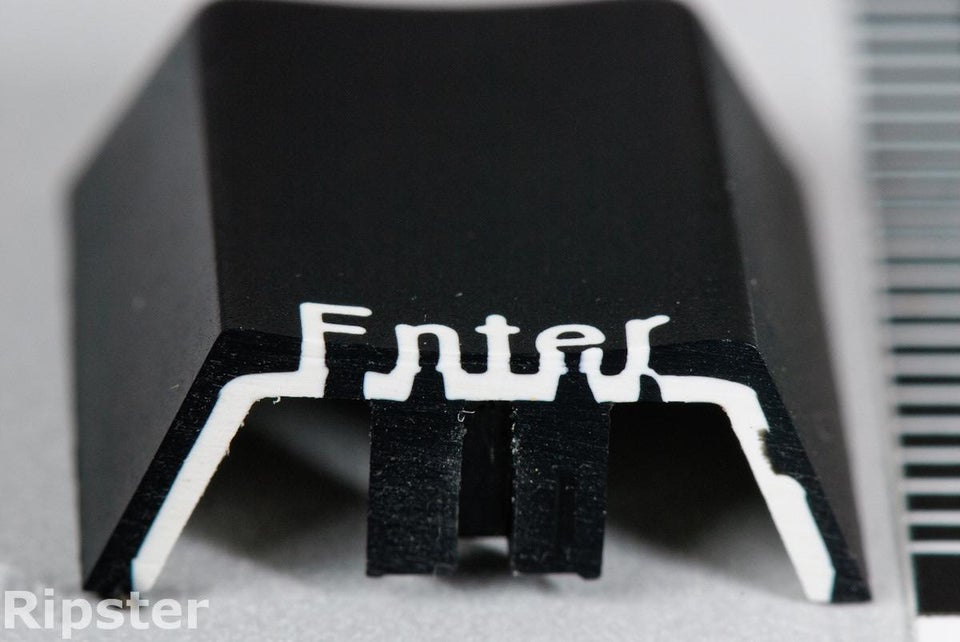
RGB Backlighting
Some mechanical keyboards are backlit with LED, and offer Red/Green/Blue (RGB) lighting. RGB keyboards have the option to choose over 16 million colors due to the various RGB color combinations and hues, whereby each key can have its own unique color. This gives RGB keyboards the ability to display different lighting patterns and color combinations, making it look as if your fingers are having a rave. However, RGB keyboards aren’t just for aesthetic purposes and finger raves, but serve a functional role as well. If you game in the cover of night, LED backlit keyboards make it easy to identify each key – just in case you forgot where WASD was. Mechanical keyboards with RGB lighting will install software on your PC so the user can create or select preset patterns. Therefore, if you prefer tactile and audible feedback, you can add a visual feedback with some RGB keyboards, as some will have the option to create a visual response when a key is pressed.
Top Picks
Full Size/100%
TKL/80%
Compact/60%
Budget
TL;DR
- Mechanical keyboards use spring-loaded mechanical switches that last much longer than ordinary keyboard switches.
- Key rollover (KRO) and anti-ghosting affect how many keys can be pressed simultaneously with accurate keystroke recognition.
- There are three types of mechanical switches: linear, tactile, and clicky. Each switch type feel and sound different.
- There are various mechanical switch brands. Cherry is the most popular brand, and other mechanical switch makers model their switches after Cherry’s.
- Mechanical keyboard size affects keyboard layout, and is measured in percentages, with 100% being full-size and 40% being very compact.
- Keycaps are primarily made with three different types of plastic: ABS, POM, and PBT. Double-shot refers to the injection molding process that makes keycap legends wear-resistant.
- RGB LED backlighting is a common feature that enables a keyboard to display 16+ million different colors with various display-pattern options.
latest Posts
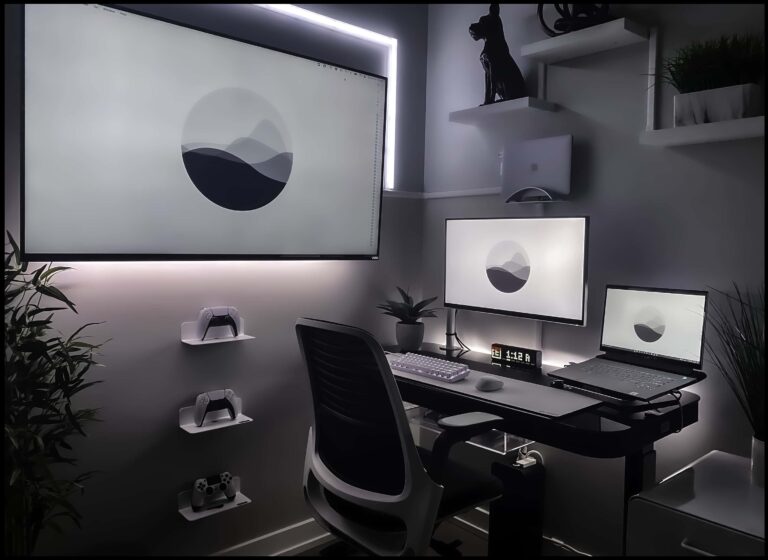
Battlestation Breakdown No. 16
This aesthetic, monochrome battlestation is the perfect place to game and work.

Battlestation Breakdown No. 15
This laptop-powered battlestation is clean and simple. Sitting on an adjustable stand, the laptop acts as a secondary monitor while simultaneously powering the setup.
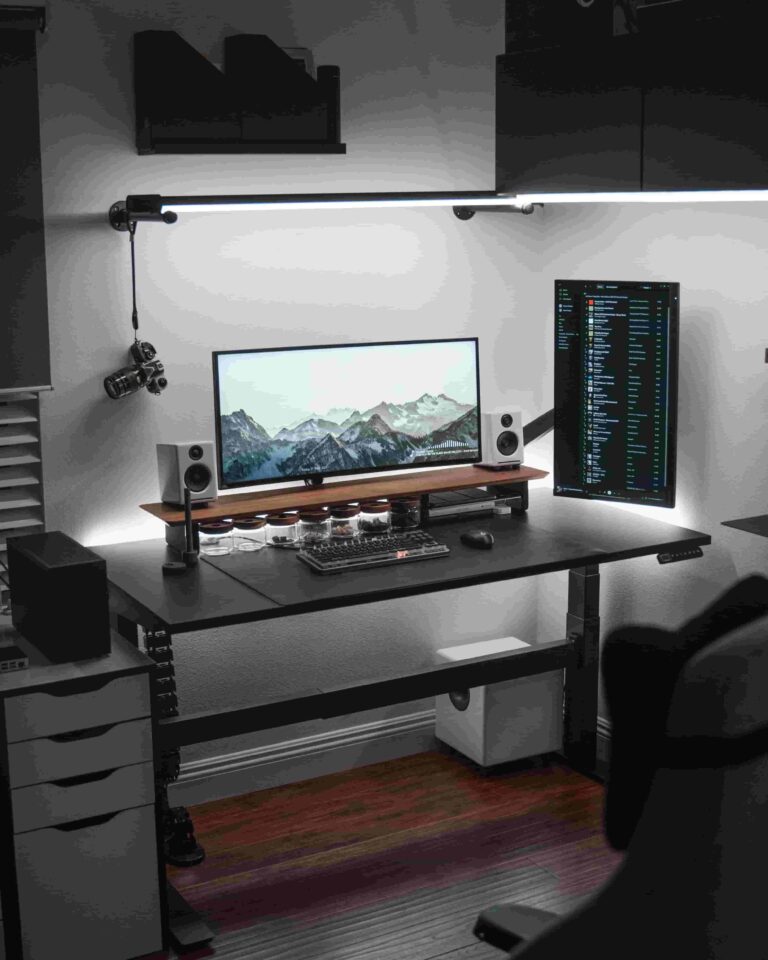
Battlestation Breakdown No.14
This battlestation is reminiscent of a laboratory or workshop with its brilliant lights, sit-stand desk, and jars with keycaps and mechanical switches. A hobbyist would easily have the ability to stand and tinker with custom mechanical keyboards, or paint Warhammer miniatures with the perfect lighting and desk space.

Twitch Streaming Starter Kit
Streaming can be a lucrative undertaking if you manage to accumulate enough followers willing to give you a piece of their hard-earned income, but streaming is a competitive business.

